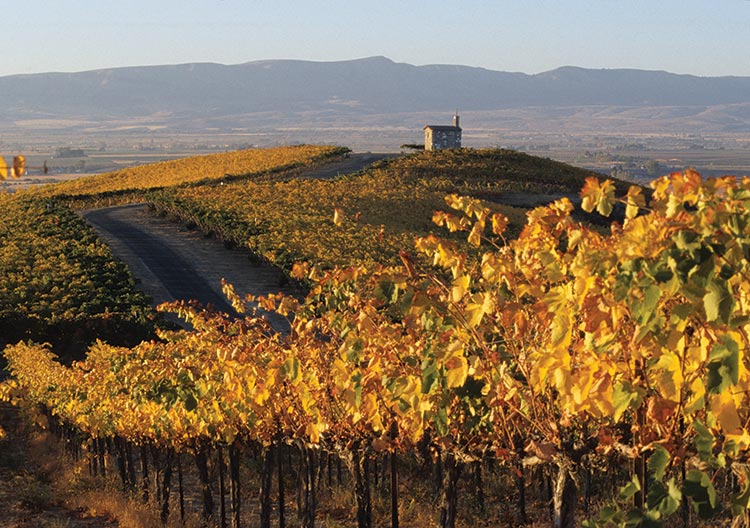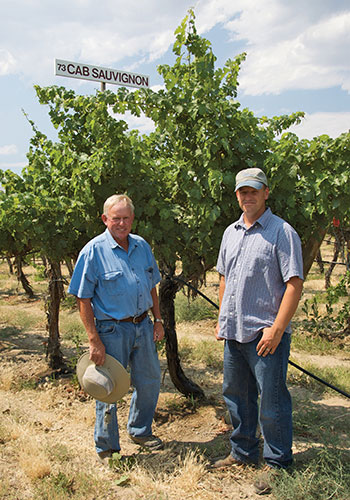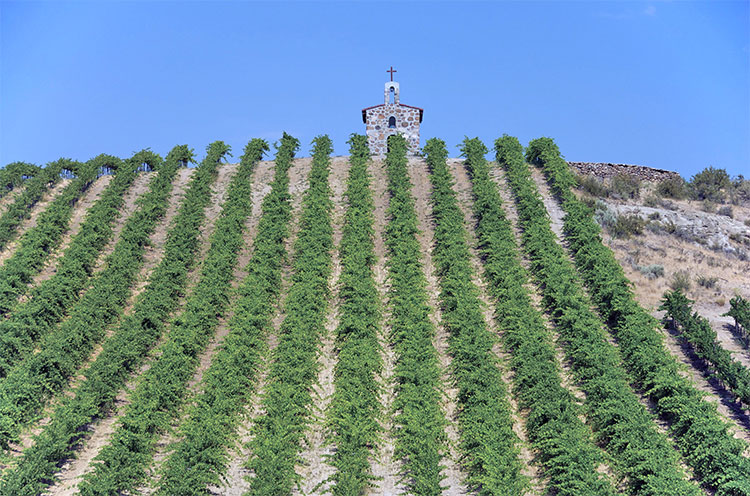Tracing Red Willow Vineyard’s roots to the birthplace of Washington Syrah
 Many a great bottle of wine has begun with grapes from Red Willow Vineyard. In winemaker circles, the vineyard is synonymous with grower Mike Sauer, whose elbow grease and vision have contributed mightily to the high demand for his quality grapes.
Many a great bottle of wine has begun with grapes from Red Willow Vineyard. In winemaker circles, the vineyard is synonymous with grower Mike Sauer, whose elbow grease and vision have contributed mightily to the high demand for his quality grapes.
Sauer has diligently labored over this piece of land for 40 years. Still, he gives away all the credit for the vineyard’s success. “The soil gives an elegant and concentrated element to the wine with a lot of structure that ages very well,” he suggests. He and his family own Red Willow Vineyard, which sits in the northwest corner of the Yakima Valley appellation on the fourth-generation family farm established by Mike Sauer’s grandfather-in-law in the 1920’s.
Red Willow was named for an ancient, dried up creek bed canyon that descends from Ahtanum Ridge and passes through part of the vineyard. Characterized by its rocky, steep hillsides, the vineyard boasts a complexity and diversity of soils, which allows many different grape varieties to flourish.
“I love hillside fruit because the angle to the sun gives the vines more exposure,” says master winemaker Bob Betz, commenting on Red Willow’s terrain. “Hillside slopes also tend to be more protected in winter. In as much as air drains off a slope, cold air drains off a slope the way water would.”
Betz uses Red Willow grapes in his blends, and in fact, he is releasing a dense and silky Syrah this fall made from 100% Red Willow grapes, called La Côte Patriarche. Asked what makes Red Willow distinctive, Betz replies, “Red Willow is a combination of a very special site, a very smart grower, and a high work ethic. To me, that is the essence of Red Willow. Mike (Sauer) knows his site, his craft, his culture and provides us with uncompromised fruit.”
The iconic Monsignor Chapel sits atop Red Willow’s highest hill, built with native stones from the farm. Sauer constructed the monument in memory of his close family friend, the priest who had baptized all of his children. “I was inspired by a chapel I saw in the Rhône region of France,” says Sauer. Seen from miles around, the Monsignor Chapel gives the vineyard a distinct identity that is depicted on certain wine labels and corks.
The Mother of Washington Syrah
The very first Syrah vineyard block planted in Washington was at Red Willow in 1986, making it the mother of Washington Syrah. In fact, it is estimated that 80 percent of all Syrah plantings in Washington can be traced back to cuttings from this vineyard. While Sauer has grown over 20 different varieties at Red Willow over the past 35 years, he believes Syrah is what Washington grows best.

Jonathan Sauer, Mike’s son, recalls the story about how after the first Syrah block was planted there was a celebration on the hillside with bottles of Hermitage and Côte-Rôtie from the northern Rhône Valley in France where Syrah originated. After enjoying the wine, they dug holes and buried the empty bottles to let the ground know what was expected of it. It was a symbolic gesture and the vineyard has lived up to those expectations quite well.
Early Roots
While their first vines were planted in 1971, the defining year for Red Willow was 1973 when Mike Sauer was introduced to Dr. Walter Clore, the esteemed Washington State University (WSU) viticulturist. Their relationship led to many cooperative efforts with the WSU Prosser Experiment Station. They installed a weather station and experimented with numerous grape varieties. Red Willow’s first vineyard block of Cabernet Sauvignon was planted in 1973 and is still going strong, making it one of the oldest Cabernet Sauvignon blocks in the state.
Dating back to 1978, Red Willow Vineyard has had a longstanding relationship with Associated Vintners, later known as Columbia Winery. David Lake, Columbia’s winemaker for many years, was particularly fond of the vineyard and was the first to produce a Red Willow vineyard designated wine.
Popular Demand
In recent years the vineyard’s characteristic fruit has been sought out by a growing number of other notable Washington producers such as Betz, DeLille, Long Shadows, Owen Roe, Adams Bench, Mark Ryan, Kana, Efeste and Andrew Rich.
Winemaker Bob Betz remarks, “It’s a really wonderful series of notes that Red Willow brings to the party; the flavors tend to be dense and concentrated and rich. Especially the older vines. We get some Cab that was planted in 1973 and some Syrah that was planted in 1986. I find it a great tool to bring to our blends.”
The Sauer family also owns a second vineyard on the family farm, Les Vignes de Marcoux, named after Mike Sauer’s mother’s maiden name. Less than a mile west of Red Willow, the soils are much less variable than the steep vineyards of Red Willow. Ten wineries, including Betz, Owen Roe, and Adams Bench will vineyard designate this year using either Red Willow or Les Vignes de Marcoux grapes.

Plowing Forward
In 2008, the Sauer’s planted the last suitable vineyard ground at Red Willow to a block of Cabernet Franc, giving them 140 total planted acres of wine grapes. In spite of the current economic recession, Red Willow continues to plow ahead and do what they do best. “We have seen a lot of caution and sensitivity in pricing but very little pullback (from winemakers),” says Mike Sauer. “Of course, at the vineyard level, these grapes will translate to wine sold two or three or four years from now.”
Sauer is in the process of bringing more energy-efficient farming practices to Red Willow. Not one to rest on past accolades, he is driven by his vision to someday see the vineyards “become authentically green through practices that are sustainable.”
After a lifetime of farming Red Willow, Mike Sauer tirelessly plows forward with the help of his family.
He has huge respect for the vintners that he works with, and believes in a spirit of cooperation. Sauer eloquently sums up the harmonious team effort that exists between growers and winemakers, “It’s the work of many people that comes together in a single vintage, and that vintage eventually becomes a cherished moment of that year.”
Written by Kori S. Voorhees
